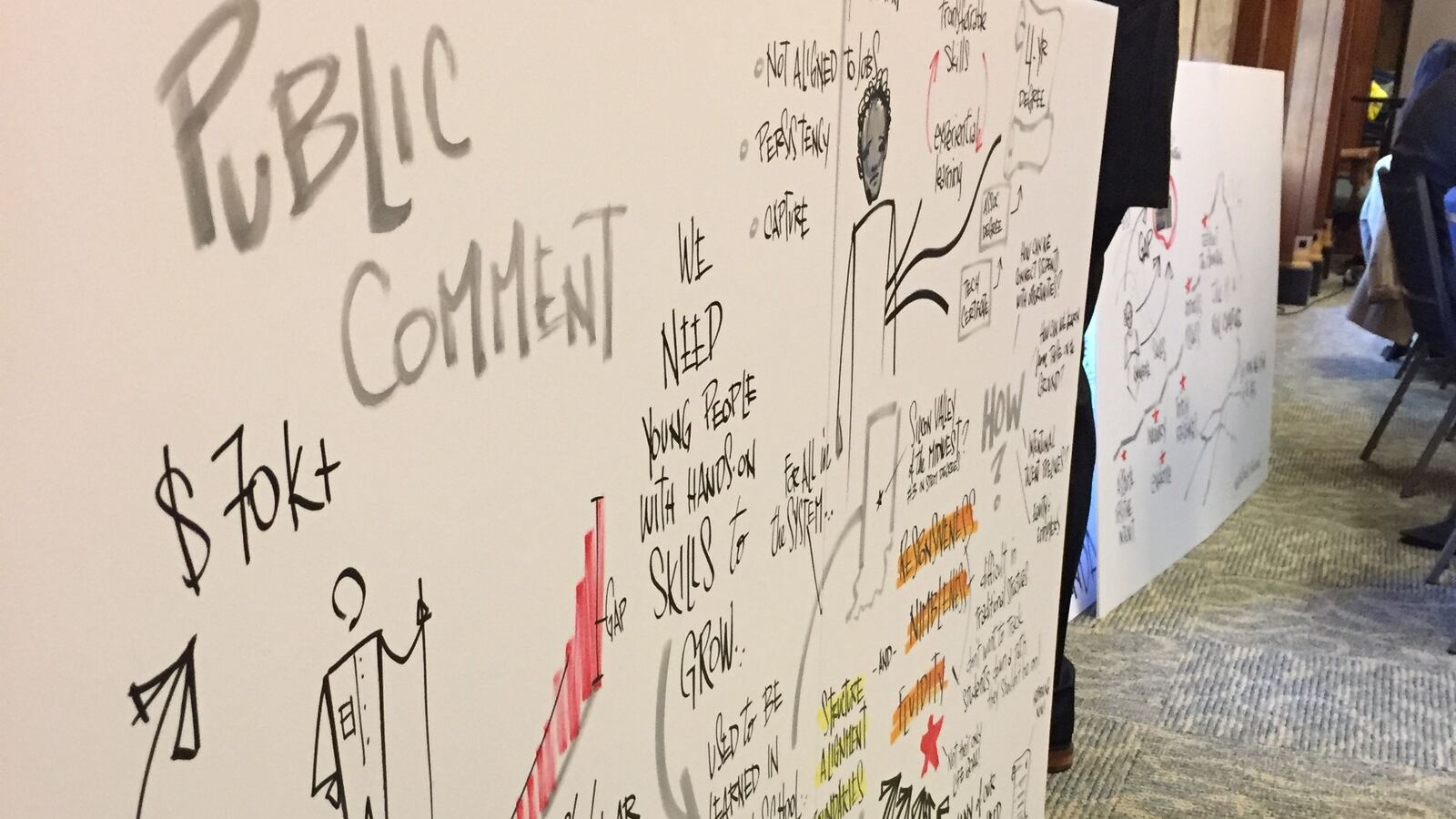A year from now, Indiana high school students will have to meet an extra set of requirements to graduate in an effort to better prepare them for what comes after.
It’s not yet clear exactly what those requirements will be, but a committee led by the Indiana State Board of Education is beginning the process to figure it out. The charge to develop these “graduation pathways” came down from the Indiana General Assembly in the same bill that established the test that will replace ISTEP in 2019.
“We want these pathways to serve as the culmination of a student’s (high school) career,” said committee chairman and state board member Byron Ernest. “We want to show them a true readiness and show businesses and higher education a true readiness of our students.”
State Superintendent Jennifer McCormick, a member of the 14-member graduation pathways committee, said today that the pathways need to be a collaboration between schools, the state, community members and the workforce. It can’t fall to schools alone to fund, manage and be held accountable for new programs.
“It really does have to be a partnership,” McCormick said. “I understand some of the struggles … (the workforce) is in a crisis, too, with employees, but it’s one of those if we are going to solve the problem, we’re going to have to work hard to come up with solutions.”
The panel includes representatives from the Commission for Higher Education, Department of Workforce Development, state board, legislature, Indiana Chamber of Commerce and a few parents and educators. It is set to meet seven more times through early November.
The state board has final authority of which requirements would end up counting, but the law spells out some suggestions:
- Passing end-of-course, International Baccalaureate, Advanced Placement, dual credit or college entrance exams, such as the ACT or SAT.
- Earning industry-recognized certificates
- Passing the placement exam for the U.S. military
Indiana’s academic and technical honors diplomas — which 37.9 percent of students in the state earned in 2015-16 — already include requirements that pertain to AP, IB and dual credit exams, and industry certificates. There’s no guidance in the law about how these pathways would differ from what’s already in honors diplomas.
Much of the conversation at today’s inaugural meeting followed familiar themes found in years of previous discussions by the Indiana Career Council, established in 2013: Indiana employers can’t fill jobs; students leave high school and college unprepared to enter the workforce; therefore, state education and workforce agencies, and employers need to get together to figure out a solution.
Bruce Watson, director of facilities for Fort Wayne Metals, is one such employer struggling to find prospective employees. He addressed the board during public comment.
“I can’t hire people to maintain our growth,” Watson said. “Not everybody needs a four-year degree … this is not a low-dollar, unskilled workforce. This is something significant for a career.”
The discussion today was broad and wide-ranging, covering ideas on work-based learning requirements, how to credential students for high-demand jobs, counselor and teacher shortages, character education, and how to balance the needs of rural, urban and suburban districts.
But the group did manage to agree on a few main points to guide their work going forward: Students should have flexibility to change their minds before they graduate; the pathway system should be equitable and easy to explain to students and parents; and employers should be part of the conversation.
Ultimately, practicality needs to be prioritized, said panel member John Elcesser, executive director of the Indiana Non-Public Education Association, a group that advocates for private schools.
“Can we staff it, can we resource it and can counselors manage it?” Elcesser said. “I think that has to be in the back of our mind.”
You can find the panel’s upcoming meeting schedule here. Meetings are open to the public.


